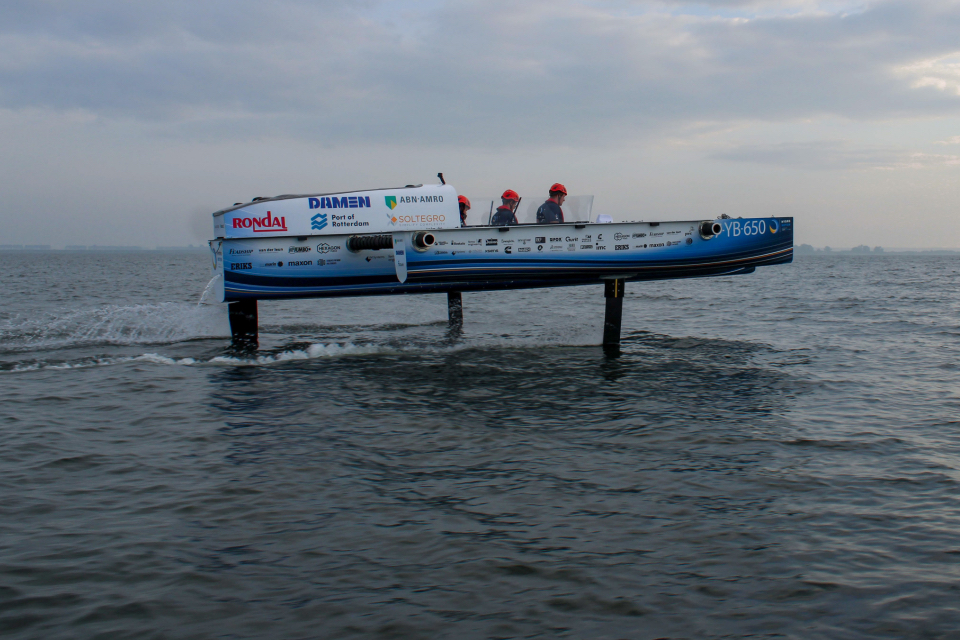A day before the decisive World Cup race off the coast of Monaco, the experimental “flying” hydrogen boat of Delft University of Technology students has been heavily damaged. The hydrogen-powered boat suffered major damage to its electrical systems on Friday.
The team hopes to be able to repair the defect in time for the main long-distance race, which will be held on Saturday. ‘It is going to be a challenge, but we are going to do everything we can to win the long-distance race,’ says team manager Simone Vis.
The damage occurred during the second of the three World Cup races, when the flying hydrogen boat hit the water hard during an unfortunate landing. ‘It was a huge scare. There has never been so much water in the boat before,’ says pilot Gerard Wiegersma.
Due to the water damage, the part that regulates the voltage on board failed and the boat had to be towed to the harbour.
Fully hydrogen-powered
The boat is powered entirely by hydrogen. This makes it possible to efficiently store green energy in the boat, allowing it to sail longer distances. The twenty students in the team say they want to show the maritime sector that sailing long distances in a sustainable way is possible.
At a speed of 22 kilometres per hour, hydrofoils lift the trimaran from the water to reduce resistance and thus fuel consumption, while being powered by hydrogen. The hydrogen-powered boat has been optimised to take on the challenge of travelling six hours on the open sea without refuelling.
The boat is piloted by three pilots and reaches speeds of up to forty kilometres per hour. Hydrogen gas is stored under high pressure in an on-board tank. The fuel cell combines this hydrogen with oxygen from the air to generate electricity. This powers the engine.
Also read: [VIDEO] TU Delft students present world’s first ‘flying’ boat
Source: ANP








